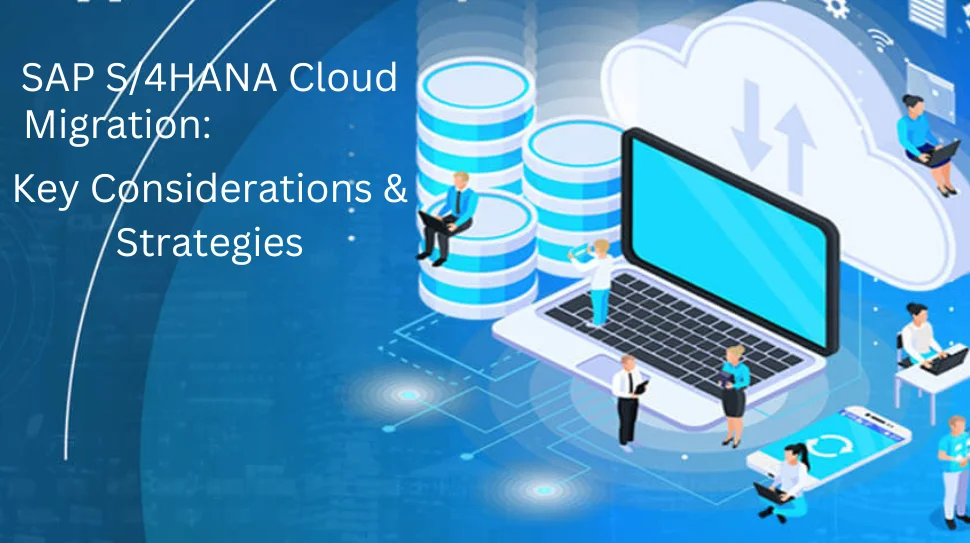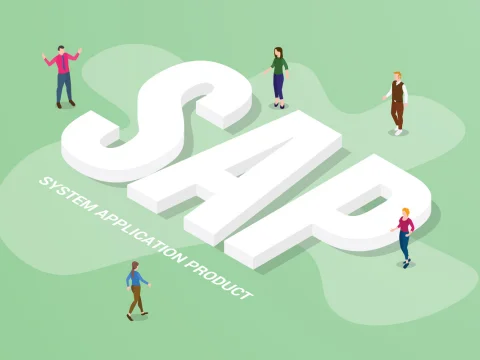SAP S/4HANA Cloud Migration: Key Considerations and Strategies


Migrating to SAP S/4HANA Cloud represents a significant step forward in modernizing your enterprise resource planning (ERP) system. This advanced cloud solution offers powerful tools for real-time data processing, enhanced analytics, and improved user experiences. But the process of migrating can be intricate and needs to be well planned and carried out. This blog will walk you through key considerations and strategies to ensure a smooth and successful migration to SAP S/4HANA Cloud.
Comparing SAP S/4HANA Cloud to conventional ERP solutions reveals a number of benefits. Recognizing these advantages can aid in defending the expense of migration:
The introduction of Material Requirements Planning (MRP) systems, which concentrated on manufacturing processes, in the 1960s marked the beginning of the path for ERP systems. Comprehensive ERP systems that integrated several corporate processes began to appear in the 1990s. ERP systems nowadays are more sophisticated, utilizing real-time data processing, cloud computing, and artificial intelligence.
In this history, SAP has been a leader, always improving and modifying its products to satisfy the shifting needs of enterprises. SAP has raised the bar for ERP systems with the release of SAP S/4HANA, a next-generation ERP suite.
The HANA in-memory database, which SAP S/4HANA Cloud uses, enables real-time data processing. Businesses can instantly evaluate massive amounts of data thanks to this capabilities, and they may base their decisions on up-to-date knowledge. Better agility and quicker reaction times to changes in the market are the outcomes.
SAP S/4HANA's cloud version has an updated, user-friendly interface that improves usability. Fiori's user experience (UX) design makes it simpler for users to navigate and access key capabilities, which increases productivity.
The ability to scale resources up or down in accordance with company needs is made possible by cloud technologies. SAP HANA Organizations may swiftly respond to changes in demand or growth by adjusting their ERP capabilities with cloud computing, which removes the need for physical infrastructure limitations.
By lowering the need for on-premise gear and maintenance, moving to the cloud can save money. Businesses can switch to a subscription-based pricing model with SAP S/4HANA Cloud, which frequently results in cheaper upfront costs and predictable ongoing expenses.
Before embarking on your migration journey, it’s essential to consider several key factors:
It's crucial to do a comprehensive evaluation of your current IT environment. Cataloging current applications, systems, and data is required for this. Think about taking these actions:
Keep track of all the systems and apps that are in use right now, along with any integrations and customizations.
Assess how well your current systems are performing in order to pinpoint any areas that might need to be adjusted or optimized throughout the migration.
Determine which systems are dependent on which ones to make sure the migration plan takes into account all integrations.
Aligning the migration with your business objectives is crucial. Consider these aspects
Find out how to improve your business processes using SAP S/4HANA Cloud. Seek out opportunities to increase efficiency through automation and real-time analytics.
Examine how well your present system satisfies your scalability requirements and how SAP S/4HANA Cloud might better satisfy these demands.
Assess the degree to which SAP S/4HANA Cloud complies with applicable industry legislation and security standards.
Data migration is a critical component of the migration process. Key considerations include:
Evaluate the volume, quality, and applicability of the data that needs to be moved. Clean up and standardize the data to guarantee accuracy.
To ensure a seamless transition of data from old systems to SAP S/4HANA Cloud, make use of SAP's data migration tools and best practices.
To ensure operational continuity, create a plan for integrating SAP S/4HANA Cloud with other apps and systems inside your company.
SAP provides cost-effective, scalable, and flexible cloud-based ERP solutions. Through the cloud, companies may access their ERP systems at any time and from any location, facilitating remote work and international operations.
Understanding the financial impact of the migration is essential for effective budgeting. Consider:
Determine how much SAP S/4HANA Cloud licenses will cost, taking into account the price of any extra modules or features that will be needed.
Take into consideration the price of deployment, customisation, and consultancy.
Take into account the costs of upkeep, support, and subscription fees.
A well-defined strategy can significantly enhance the success of your migration to SAP S/4HANA Cloud. Key strategies include:
Effective planning is crucial for a successful migration:
Clearly state the migration's objectives and how they fit into your overall business plan.
Make a comprehensive migration roadmap with deadlines, checkpoints, and roles.
Make sure you have enough money and highly qualified staff on hand to help the relocation.


Select the migration approach that best fits your needs:
entails completely redesigning and putting SAP S/4HANA Cloud into use. ideal for companies wishing to launch without being constrained by legacy systems.
concentrates on modernizing and changing an established SAP system. Ideal for companies who want to keep their current modifications and setups.
combines aspects of the Brownfield and Greenfield methodologies. beneficial for companies with intricate needs and those who need to keep some of their current systems in place.
Thorough testing is essential to ensure a smooth transition:
Check to make sure everything functions in the new environment as it should.
Examine the system's performance to make sure it lives up to the expected levels of responsiveness and speed.
Test the system with end users to make sure it satisfies their needs and expectations
Successful migration involves effective training and support:
Provide thorough training courses to acquaint users with the capabilities and functionality of the new system.
Throughout the shift, offer constant assistance to users and resolve any problems.
Migrating to SAP S/4HANA Cloud can present several challenges. Here’s how to address them:
Adopt data governance procedures to guarantee consistent and high-quality data during the migration process.
Solve integration problems by connecting SAP S/4HANA Cloud to other systems through middleware and standardized interfaces.
Reduce user resistance by outlining the migration's advantages in detail and by offering sufficient assistance and training.
Making the switch to SAP S/4HANA Cloud is a game-changing move that will have a big impact on your company. You can guarantee a successful transfer that improves your operational efficiency and sets up your company for future success by taking into account important elements and putting smart tactics into practice. To fully realize the potential of SAP S/4HANA Cloud, begin your migration journey with a well-defined plan and a sharp focus on coordinating the new system with your business objectives.